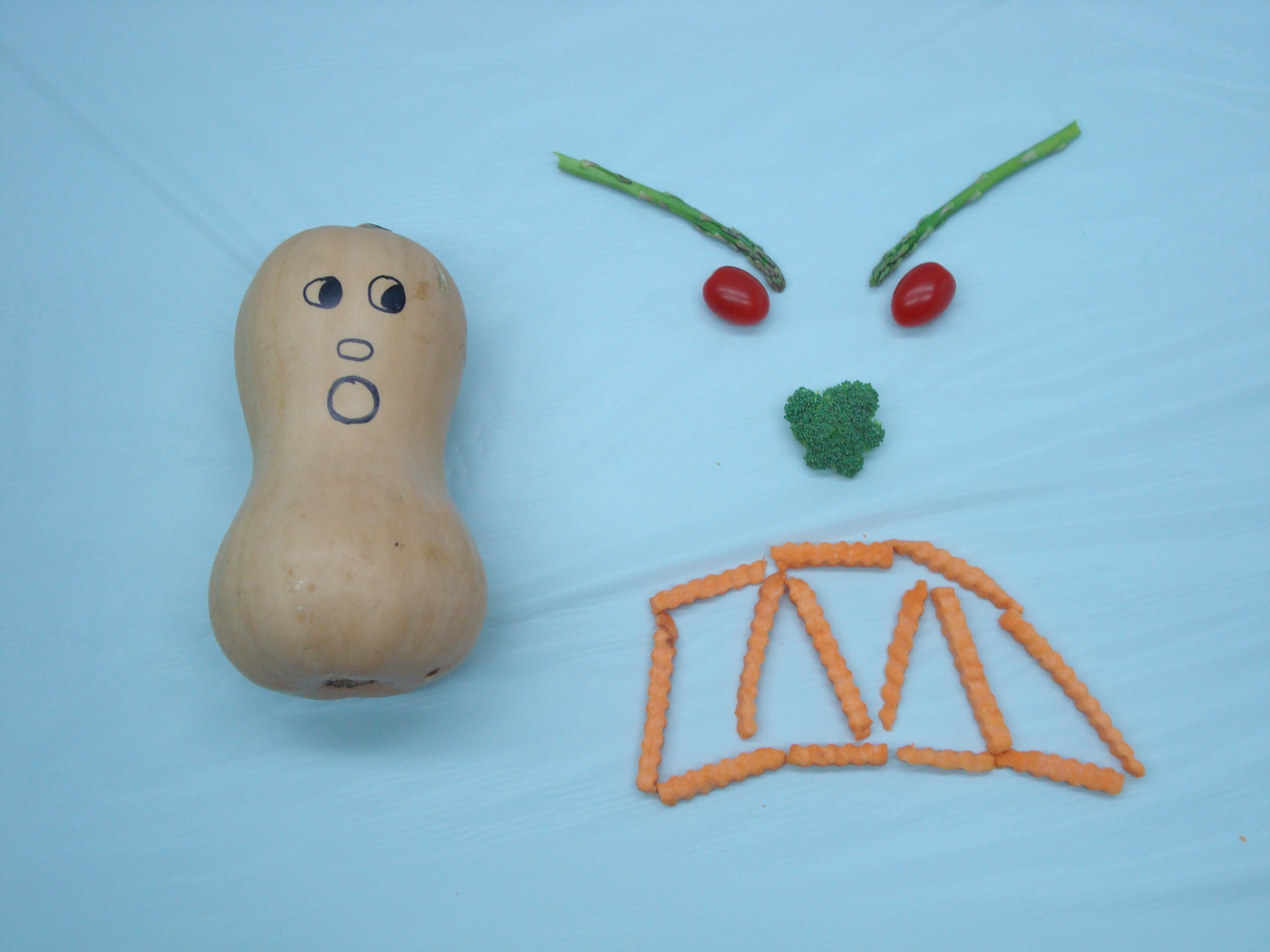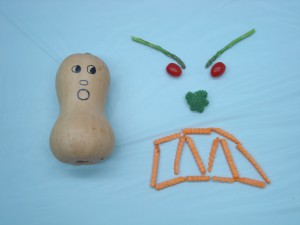
by Angela Hinkle | Mar 11, 2016
 Starchy foods are healthy – eat them! Starchy foods make you fat – don’t eat them! How do you score a healthy starch bracket with all this contradictory madness? For each round of your daily eating game, choose a variety of healthy starchy foods made up of whole grains, vegetables, and fruits. These starchy foods are rich in vitamins, minerals, and fiber and are the main source of carbohydrates to provide our muscles, brain, and other organs with energy.
Starchy foods are healthy – eat them! Starchy foods make you fat – don’t eat them! How do you score a healthy starch bracket with all this contradictory madness? For each round of your daily eating game, choose a variety of healthy starchy foods made up of whole grains, vegetables, and fruits. These starchy foods are rich in vitamins, minerals, and fiber and are the main source of carbohydrates to provide our muscles, brain, and other organs with energy.
Choose starchy foods with little or no added fats, sugar, or sodium. Give these starchy foods a spin in your diet: whole wheat flour, pumpkin, popcorn, brown rice, potato with the skin, corn, whole grain barley, acorn squash, oatmeal, quinoa, green peas, and plantains or bananas.
Try whole grain cereals for breakfast, a baked potato with the skin as part of your lunch, and squash with brown rice with your dinner.
Try to keep the processed white flour products with added sugar to a minimum. These starchy foods are the ones that tend to add on the pounds without the good-for-you nutrients.
Don’t just stay in the game, be a slam dunk winner! Eat healthy starchy foods every day.
For more information, check out this site from the American Diabetes Association. http://www.diabetes.org/food-and-fitness/food/what-can-i-eat/making-healthy-food-choices/grains-and-starchy-vegetables.html

by Angela Hinkle | Jan 8, 2016
Most people don’t really have Lachanophobia – the fear of vegetables. Many folks just have an aversion to eating veggies. Since vegetables are such a major source of nutrition, the MyPlate suggests we make half our plate fruits and veggies every day for optimum health. So not wanting to eat our veggies can pose a bit of a problem.

No Fear in the New Year
How do we overcome our aversion to (or fear of) vegetables?
Make It Irresistible. Start with the first rule of food. Taste matters. It has to taste good. Really good. Try different spice blends. Good old salt and pepper may not be enough. Lemon juice, olive oil, parmesan cheese, soy sauce, pepper flakes, garlic, or a little bit of butter can make a huge difference. If the bitter taste in many vegetables bothers you, try adding a little honey, pineapple, maple syrup, raisins, or sweet and sour sauce. Try “younger” veggies, like baby spinach, which tend to taste less bitter.
Stop Saying You Hate All Vegetables. You just haven’t found a vegetable you like yet. Start with little baby bites. Take small bites of many different veggies. Try a new veggie as a side dish or ask for a taste of a veggie off your friend’s plate when you go out to eat. Be sure to try new veggies with an open mind. Instead of “this is going to be awful”, think “this could change everything for the better.”
Hide the Vegetables. Hiding vegetables in other foods allows you to become accustomed to the taste. Add vegetables to dishes you already like. Slip chopped veggies into spaghetti sauce, tuna salad, and soup or stew. Shred carrots, peppers, or zucchini into meatloaf, omelets, or casseroles. Add spinach to fruit smoothies. Also try eating a small bite of vegetable with something you already know you like: a slice of zucchini with steak or asparagus with salmon.
Experiment. Once you learn that vegetables can taste totally different depending on how they’re prepared, you won’t be so afraid of them. Roasted vegetables get a little sweeter since they caramelize in the oven. Cut up a variety of vegetables (like squash, broccoli, onions, cauliflower, and peppers). Drizzle with olive oil, add a little salt and pepper or other spices, and put them in a foil-lined pan in a 400˚F oven for about 30 minutes. Do you need to stick with old favorites like corn and potatoes? Try adding your favorite salsa to the corn or trying a combination of white, orange/sweet, purple, and red potatoes for a little something different. And don’t forget about the grill. Grilled veggies take on a smoky wonderfulness that makes everything better.
The next time you’re at the store, buy a new vegetable and learn how to prepare it. Whether hidden in your favorite meal or made into a kabob on the grill, can you find a way to sneak in more vegetables? Challenge yourself to find a new vegetable that you actually like. Check out http://www.choosemyplate.gov/vegetables-tips for more ideas.
Vegetables in the New Year – Fear Not!

by Dorothy C. Lee | Jan 4, 2016

A Win-Win Super Bowl Party
Get defensive about your health. These easy-to-tackle recipes are just as tasty, but lower in fat and calories than typical game-day fare. It’s a Win-Win situation.
Skip the six-foot-long sub sandwich usually drenched in mayonnaise. Instead, serve a soup and sandwich smorgasbord with a variety of low-fat cheeses, whole grain breads, fresh, low-sodium cold cuts, and lots and lots of fresh vegetables. Serve soups that are hearty and full of vegetables or grains.
Swap calorie-laden soft drinks with 100% fruit juice or vegetable juice. Prepare mock cocktails using half juice and half seltzer water for a healthy, refreshing beverage.
Set up a make-your-own sundae bar. Use low-fat, protein-rich Greek yogurt and add low-fat granola and fresh or frozen fruit like strawberries, blueberries, even dried fruit. Top off yogurt sundaes with nuts.
Replace chips with vegetable sticks or fruit, or try making your own tasty pita chips. Recipe follows and it only takes a few minutes. Serve a store-bought salsa or a homemade bean dip (see recipe) with carrots, celery, red pepper strips, and cucumbers instead of high-fat dips and salty chips.
If you are going to serve dessert, opt for fruit—fresh, frozen, or canned in its own juice, or there are sugar-free options.
These game day decisions will help you develop a winning game plan!
Garlic & Herb Pita Chips
4-6 whole wheat pitas
2 tablespoons olive oil
1 teaspoon Italian seasoning
½ teaspoon garlic powder
¼ teaspoon salt
Coat 2 large baking sheets with non-stick cooking spray.
Cut pitas into 8 wedges each and separate each wedge at the fold.
Place the pita wedges in an even layer on the baking sheets.
Brush wedges with oil and sprinkle with Italian seasoning, garlic powder, and salt.
Bake at 350°F for 6 to 10 minutes or until golden brown.
May be baked ahead of time and stored in an airtight container for up to 4 days.
Pinto Bean Salsa Dip
1 (approximately 15-ounce) can pinto beans, drained and rinsed, or
1½ cups cooked dried beans
1 cup shredded cheese
½ to 1 cup chunky salsa
1 to 2 tablespoons chopped onion (optional)
¼ to ½ teaspoon chili powder or to taste (optional)
Mash beans with a fork. Mix in cheese. Stir in enough salsa until mixture is desired consistency for dipping. Add onion and seasoning as desired. Serve cold or cook, stirring, over medium heat until the cheese melts and the mixture is well-blended and hot (about 5 minutes).
For further information contact:
Dorothy C. Lee, C.F.C.S.
UF IFAS Extension Escambia County
3740 Stefani Road
Cantonment, FL 32533-7792
(850) 475-5230
dclee@ufl.edu
by Angela Hinkle | Oct 30, 2015

Family Meal
When I was a kid a million years ago, my family had dinners together. Most meal times were good. I was where I was supposed to be and felt safe, important, and loved. Other meals were not so great. I specifically remember being forced to eat at least one lima bean for which much drama was executed on my part. These days, I love being able to eat dinner with my daughter. When we eat together, we’re happier and healthier, especially if we have fun things to laugh about while we eat.

FCS Dining In Day December 3rd
The payoff comes in benefits for both of us. A variety of research has shown that when we eat meals together as a family we feel closer and we eat more nutritiously. When families have meals together, it gives them the chance to catch up on what is happening in their day. There is also the chance to learn table manners, and some basic cooking skills.
For a quality meal time experience, let every member of the family help make some part of the meal – which can help develop food preparation skills – or try taking turns cooking and cleaning. Make new rituals and share traditions so everyone knows they belong to a special group. Teach youth about their heritage by serving and talking about a favorite family recipe. Offer healthy food choices (they’ll be more willing to choose these foods as they grow). And be sure to have light, easy conversations. Save difficult conversations for another time.
To help you kick start your family meal together this year, commit to “Dining In” on Family & Consumer Sciences Day, December 3, 2015. http://www.aafcs.org/FCSday/. Then add on another family meal, then another, until quality meal times become a healthy part of your family.
by Angela Hinkle | Oct 28, 2015

Happy Child with Peanut Butter Sandwich
November in the Panhandle of Florida. Time for pumpkins, cooler weather, hay rides, football games, harvesting cotton and peanuts, and of course, Thanksgiving. It’s also time for the annual Peanut Butter Challenge! We gather peanut butter to give to those who could use a little help feeding their families. Why peanut butter? It is the most requested item in food pantries, it’s shelf stable – you don’t have to heat it up or keep it cold, people like it – a lot, it’s economical – especially if it’s a buy-one-get-one-free (BOGO), it’s local – peanuts are the biggest crop in the Florida panhandle, and it’s healthy – a great source of plant-based protein.
So what about Jane? Jane’s been a consistent contributor to the Peanut Butter Challenge every year. This may not seem like a very big deal, but you see, Jane is allergic to peanut butter. This may not seem like such a big deal either, but to me, it’s like giving time to help out the blood drive even though you can’t give blood, walking in Relay for Life to show support for cancer research though you have no money to give, giving money to a charity because you have it and it feels like the right thing to do.
So whether you give because of your competitive spirit – “my group can give more than theirs”, you have a couple extra dollars and there is a BOGO, because it makes you feel good knowing how much the receiving families appreciate it, or you just feel like it’s the right thing to do, please give to the Peanut Butter Challenge.
And be thankful – for peanut butter … and Jane.
To find out more about the Peanut Butter Challenge or how you can give by November 25, please contact your local UF/IFAS Extension County office in the Northwest District UF/IFAS Extension Office.

 Starchy foods are healthy – eat them! Starchy foods make you fat – don’t eat them! How do you score a healthy starch bracket with all this contradictory madness? For each round of your daily eating game, choose a variety of healthy starchy foods made up of whole grains, vegetables, and fruits. These starchy foods are rich in vitamins, minerals, and fiber and are the main source of carbohydrates to provide our muscles, brain, and other organs with energy.
Starchy foods are healthy – eat them! Starchy foods make you fat – don’t eat them! How do you score a healthy starch bracket with all this contradictory madness? For each round of your daily eating game, choose a variety of healthy starchy foods made up of whole grains, vegetables, and fruits. These starchy foods are rich in vitamins, minerals, and fiber and are the main source of carbohydrates to provide our muscles, brain, and other organs with energy.





